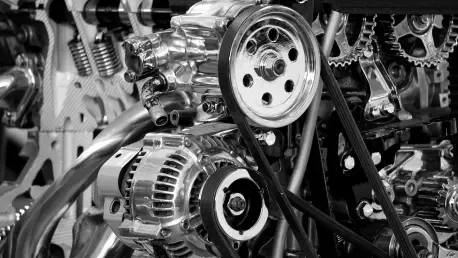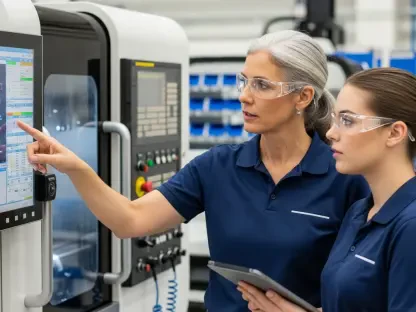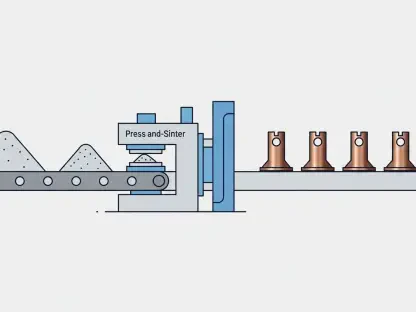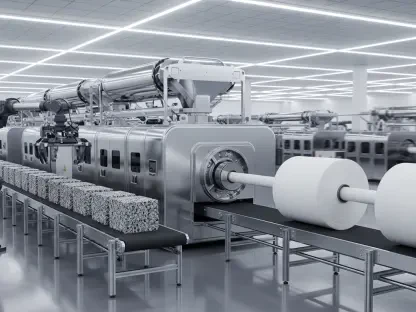Imagine a state in India transforming from an agrarian economy into a global automotive juggernaut, with output skyrocketing over 20 times in less than two decades. Gujarat, located on India’s western coast, has achieved exactly that, positioning itself as the epicenter of automobile manufacturing in the country. This market analysis dives deep into the trends, data, and strategic factors that have fueled Gujarat’s ascent in the auto sector. By examining current patterns and projecting future trajectories, this piece aims to uncover the mechanisms behind this industrial success and its implications for investors, policymakers, and industry stakeholders. The significance of this analysis lies in understanding how a single state can redefine national manufacturing capabilities and compete on a global stage.
Market Trends: Gujarat’s Automotive Surge
Gujarat’s auto manufacturing sector has witnessed an extraordinary growth trajectory, with output soaring from modest beginnings to a staggering ₹71,425 crore in recent years. This remarkable expansion reflects a consistent upward trend, doubling post-pandemic figures in just two years. The state’s ability to rebound and accelerate growth highlights a robust industrial base and adaptive strategies that have captured both domestic and international demand. Key drivers include a favorable business environment and targeted incentives that have drawn major players to set up operations.
Beyond raw output, the state’s export performance paints a picture of global competitiveness. In the current fiscal year, Gujarat exported auto components and vehicles totaling ₹13,799.79 crore, marking a significant 31.54% increase in vehicle exports compared to the prior year. With nearly 178,000 vehicles shipped to over 100 countries, including South Africa and Japan, the state has carved out a niche as a critical node in global supply chains. This export prowess underscores Gujarat’s strategic positioning and infrastructure readiness to meet international standards.
The presence of industrial giants like Suzuki, Tata, and Honda further amplifies market dynamics. These corporations have not only scaled production but also invested heavily in logistics and innovation, creating a ripple effect across the supply chain. Their involvement signals confidence in Gujarat’s ecosystem, yet it also raises questions about dependency on a few large entities. Market trends suggest a need for diversification to mitigate risks associated with concentrated investments while continuing to leverage these partnerships for growth.
Data Deep Dive: Industrial Hubs and Economic Impact
A critical factor in Gujarat’s market dominance is the development of specialized industrial zones such as Sanand and Mandal-Becharaji Special Investment Regions. Sanand, often likened to Detroit for its automotive focus, hosts major manufacturers and a sprawling network of component suppliers, fostering a self-sustaining ecosystem. Meanwhile, Mandal-Becharaji offers cutting-edge facilities that attract international brands, aligning with national initiatives to boost manufacturing for global markets. These hubs have significantly contributed to job creation and economic output in the region.
Analyzing the data, the industrial zones have been instrumental in driving a sharp rise in production capacity. The concentrated infrastructure has enabled economies of scale, reducing costs for manufacturers and enhancing competitiveness. However, challenges such as land acquisition issues and the need for sustainable urban development persist, potentially impacting long-term scalability. Balancing industrial expansion with environmental and social considerations remains a pivotal concern for maintaining growth momentum.
Economically, the ripple effects extend beyond direct manufacturing. The auto sector has spurred ancillary industries, from logistics to technology services, creating a broader economic uplift. Export figures also reveal Gujarat’s edge over other Indian states, with consistent year-on-year growth outpacing competitors like Tamil Nadu. While global trade disruptions pose risks, opportunities to expand into emerging markets and invest in niche segments like electric vehicle components could further solidify the state’s standing.
Future Projections: Opportunities in Innovation and Sustainability
Looking ahead, Gujarat’s auto industry is poised for transformation with the rise of electric vehicles (EVs) and sustainable manufacturing practices. Projections indicate that the state could emerge as a global EV hub by capitalizing on current investments in renewable energy and battery production infrastructure. This shift aligns with evolving consumer preferences and stringent emission regulations, positioning Gujarat to lead in green technology adoption over the next few years, from 2025 to 2030.
Technological disruptions, however, present both opportunities and challenges. The integration of advanced automation and digital tools in manufacturing processes could enhance efficiency but requires significant capital and skilled labor. Gujarat’s ability to adapt to these changes will be crucial in maintaining its competitive edge against global players. Strategic partnerships with tech firms and academic institutions could bridge gaps in innovation and workforce readiness.
Moreover, potential trade agreements and economic shifts may reshape market dynamics. Expanding export markets beyond current destinations and diversifying product offerings are projected to be key growth drivers. Yet, the state must navigate geopolitical uncertainties and currency fluctuations that could impact profitability. Proactive policy adjustments and investments in research and development are expected to play a vital role in sustaining Gujarat’s leadership in the auto sector.
Reflecting on Gujarat’s Industrial Journey
Gujarat’s evolution into India’s automotive powerhouse is a testament to strategic vision and relentless execution. The state’s remarkable growth in output and exports, underpinned by robust industrial hubs and visionary policies, has set a benchmark for industrial development. Its success is not merely in numbers but in crafting a replicable model that balances economic progress with global outreach. The implications of this journey are profound, offering insights into how regional strengths can be harnessed for national impact.
Moving forward, stakeholders are encouraged to focus on sustainable innovation as a cornerstone for future growth. Investing in electric vehicle technologies and green manufacturing practices could position Gujarat at the forefront of industry trends. Additionally, diversifying corporate partnerships and export markets is seen as essential to reducing risks and enhancing resilience. These steps promise to build on past achievements while addressing emerging challenges.
Lastly, policymakers and businesses alike need to prioritize workforce skilling and infrastructure upgrades to keep pace with technological advancements. Collaborative efforts between government and industry could ensure that Gujarat remains a leader in the evolving automotive landscape. By embracing these strategies, the state’s legacy is poised to inspire broader industrial transformations across India and beyond.









